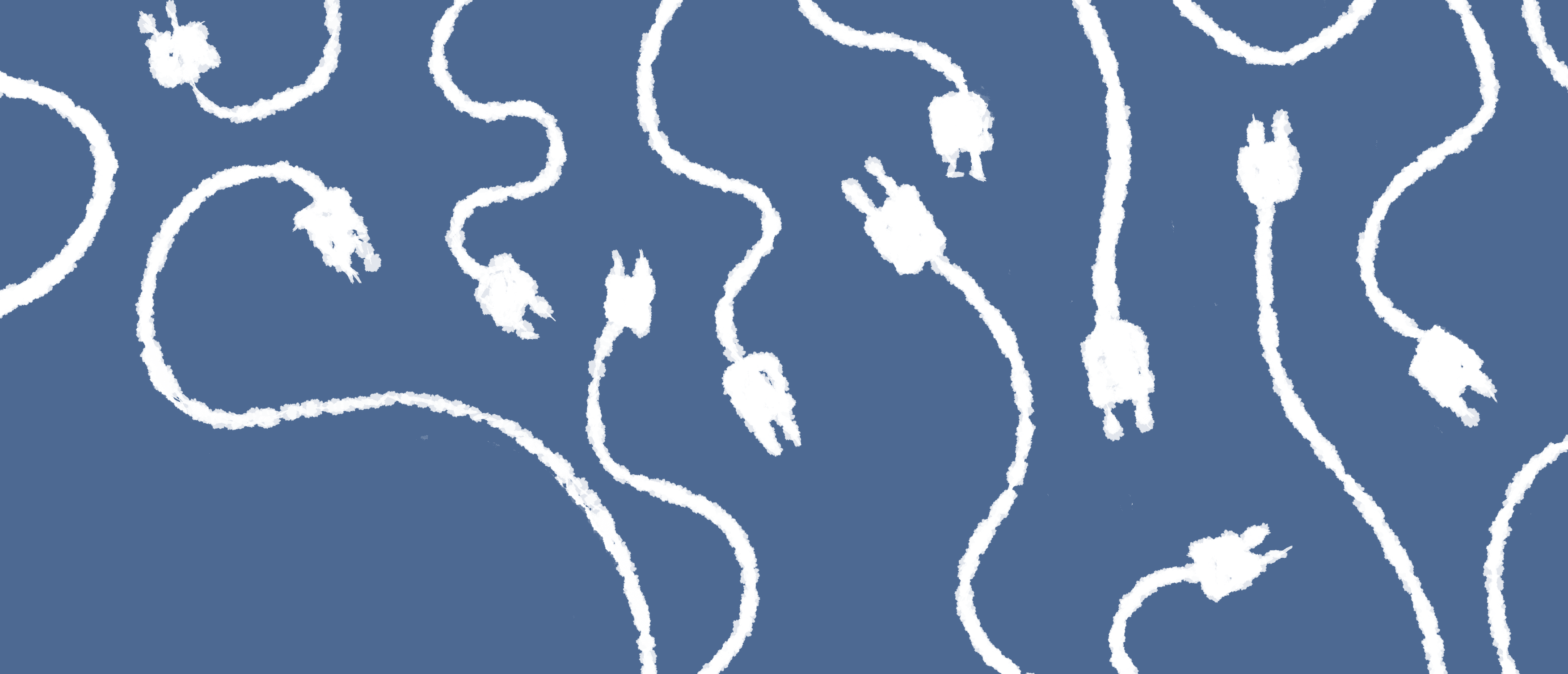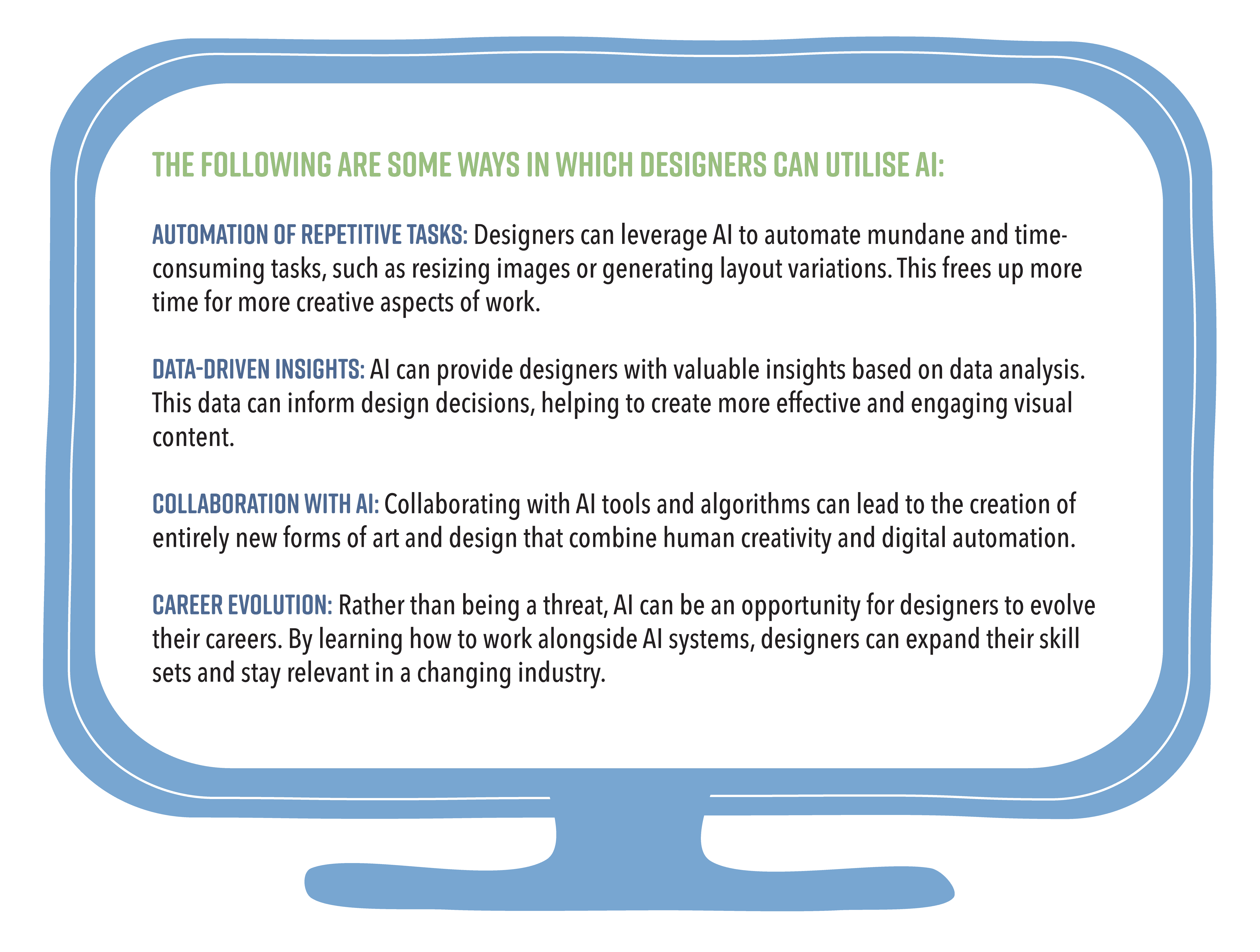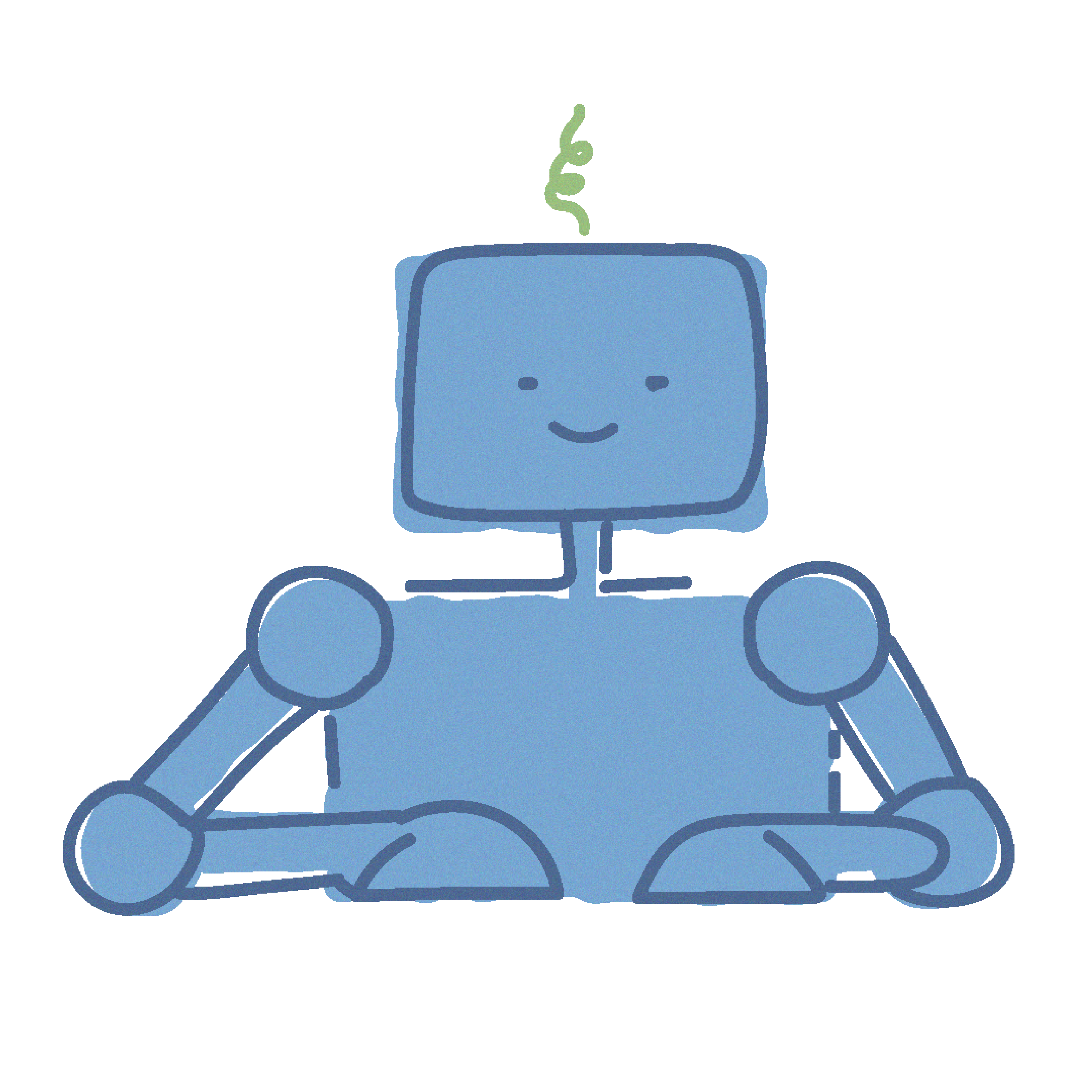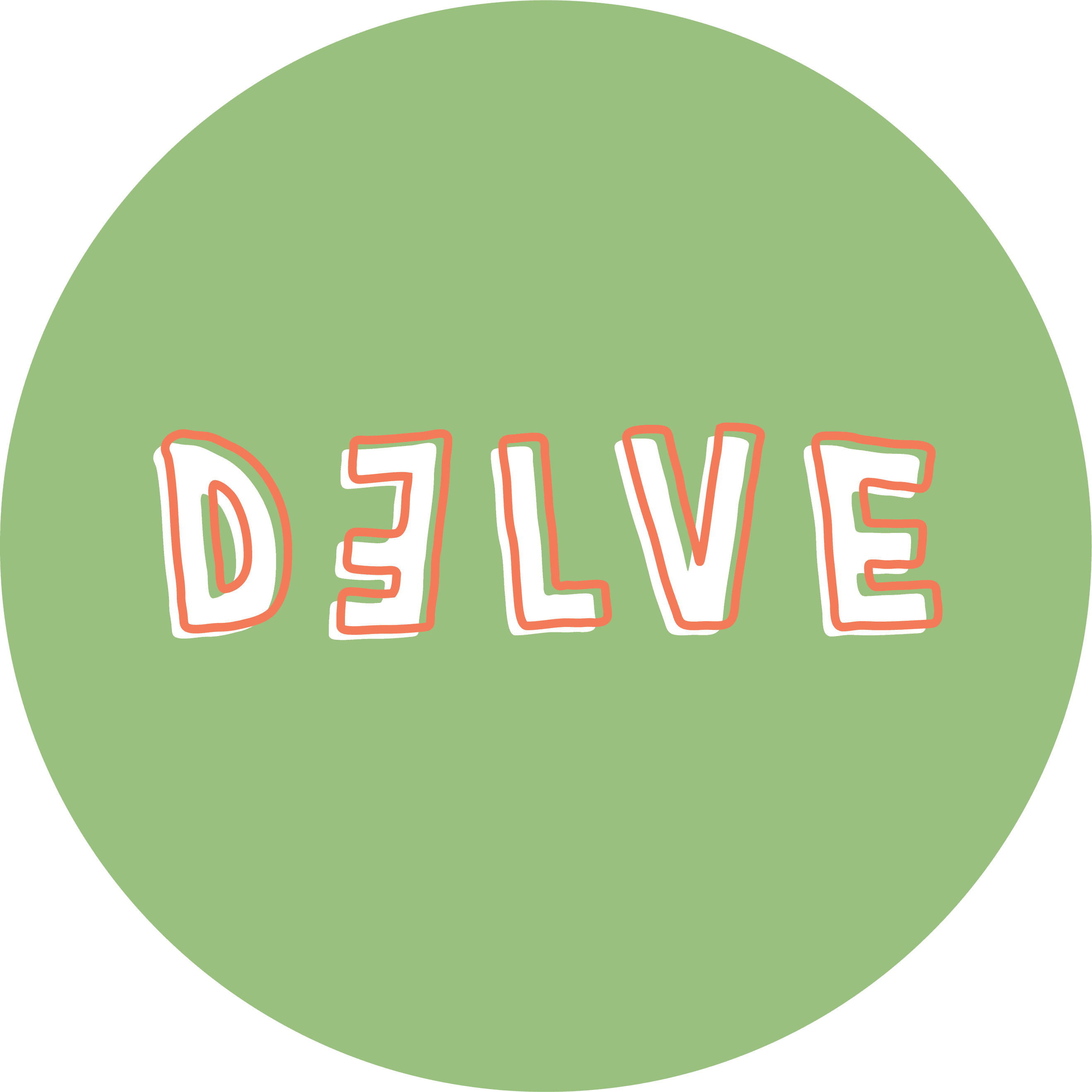
enhancing creativity
enhancing creativity
AI COLLABORATION
AI COLLABORATION
enhancing creativity
AI COLLABORATION
In an ever-evolving world, the creative industries have always been an area of constant adaptation and innovation. Irrespective of their specific career aspirations, designers and creatives face a set of emerging challenges that have the potential to impact their professions significantly. In this rapidly evolving landscape, one of the most formidable challenges is the integration of Artificial Intelligence (AI) into creative practice, which poses both opportunities and threats to those in these industries.
As automation technologies advance, AI is increasingly seen as a disruptor in the creative world. While it might seem counterintuitive for machines to infiltrate an arena built on human creativity and imagination, AI's potential to revolutionise the field is undeniable.



In an ever-evolving world, the creative industries have always been an area of constant adaptation and innovation. Irrespective of their specific career aspirations, designers and creatives face a set of emerging challenges that have the potential to impact their professions significantly. In this rapidly evolving landscape, one of the most formidable challenges is the integration of Artificial Intelligence (AI) into creative practice, which poses both opportunities and threats to those in these industries.
As automation technologies advance, AI is increasingly seen as a disruptor in the creative world. While it might seem counterintuitive for machines to infiltrate an arena built on human creativity and imagination, AI's potential to revolutionise the field is undeniable.


In an ever-evolving world, the creative industries have always been an area of constant adaptation and innovation. Irrespective of their specific career aspirations, designers and creatives face a set of emerging challenges that have the potential to impact their professions significantly. In this rapidly evolving landscape, one of the most formidable challenges is the integration of Artificial Intelligence (AI) into creative practice, which poses both opportunities and threats to those in these industries.
As automation technologies advance, AI is increasingly seen as a disruptor in the creative world. While it might seem counterintuitive for machines to infiltrate an arena built on human creativity and imagination, AI's potential to revolutionise the field is undeniable.
The Threat of AI:
The rise of AI in creative industries has raised concerns about job displacement and the devaluation of human creativity. Automation and AI have already made a significant impac tin various creative processes, from graphic design to content generation and even music composition. Algorithms can analyse vast datasets to predict trends, create personalised marketing materials, and even generate art that resonates with audiences.
For designers and creatives, the fear is that AI might replace them in tasks traditionally thought to be uniquely human. It's a valid concern, especially in roles that involve repetitive and data-driven tasks. AI's efficiency in crunching numbers, optimising processes, and generating content can pose a challenge to those who rely solely on these aspects of their work.
Embracing AI:
Instead of fearing the rise of AI, designers and creatives have an opportunity to embrace it as a powerful tool in their arsenal. AI can be a valuable partner in the creative process, complementing and enhancing human creativity rather than replacing it.Learning how to harness the power of AI can enhance your ability to generate ideas and improve your concise,descriptive tools, ultimately boosting productivity. Collaborating with AI as a teammate in brainstorming sessions allows you to tap into its data-driven insights to inspire and refine creative concepts, paving the way for innovative solutions.
The Threat of AI:
The rise of AI in creative industries has raised concerns about job displacement and the devaluation of human creativity. Automation and AI have already made a significant impact in various creative processes, from graphic design to content generation and even music composition. Algorithms can analyse vast datasets to predict trends, create personalised marketing materials, and even generate art that resonates with audiences.
For designers and creatives, the fear is that AI might replace them in tasks traditionally thought to be uniquely human. It's a valid concern, especially in roles that involve repetitive and data-driven tasks. AI's efficiency in crunching numbers, optimising processes, and generating content can pose a challenge to those who rely solely on these aspects of their work.
Embracing AI:
Instead of fearing the rise of AI, designers and creatives have an opportunity to embrace it as a powerful tool in their arsenal. AI can be a valuable partner in the creative process, complementing and enhancing human creativity rather than replacing it.Learning how to harness the power of AI can enhance your ability to generate ideas and improve your concise,descriptive tools, ultimately boosting productivity. Collaborating with AI as a teammate in brainstorming sessions allows you to tap into its data-driven insights to inspire and refine creative concepts, paving the way for innovative solutions.
The Threat of AI:
The rise of AI in creative industries has raised concerns about job displacement and the devaluation of human creativity. Automation and AI have already made a significant impact in various creative processes, from graphic design to content generation and even music composition. Algorithms can analyse vast datasets to predict trends, create personalised marketing materials, and even generate art that resonates with audiences.
For designers and creatives, the fear is that AI might replace them in tasks traditionally thought to be uniquely human. It's a valid concern, especially in roles that involve repetitive and data-driven tasks. AI's efficiency in crunching numbers, optimising processes, and generating content can pose a challenge to those who rely solely on these aspects of their work.
Embracing AI:
Instead of fearing the rise of AI, designers and creatives have an opportunity to embrace it as a powerful tool in their arsenal. AI can be a valuable partner in the creative process, complementing and enhancing human creativity rather than replacing it.Learning how to harness the power of AI can enhance your ability to generate ideas and improve your concise,descriptive tools, ultimately boosting productivity. Collaborating with AI as a teammate in brainstorming sessions allows you to tap into its data-driven insights to inspire and refine creative concepts, paving the way for innovative solutions.
Ethical considerations are paramount when integrating AI into design processes. Designers must prioritise transparency and disclosure regarding the use of AI tools to maintain trust and integrity in their work.
Ethical considerations are paramount when integrating AI into design processes. Designers must prioritise transparency and disclosure regarding the use of AI tools to maintain trust and integrity in their work.
AI Tools/Software that designers can utilise and integrate in their practice:
Adobe Sensei/Firefly
ChatGPT (for brainstorming)
DALL-E
Colormind

While the rise of AI does pose challenges to the creative industry, it also offers exciting opportunities for designers and creatives to evolve and innovate. Regardless of personal stances on AI—and openness to utilise them—it is important to be educated on the capabilities of new and emerging AI tools. But, by viewing AI as a collaborative partner rather than a replacement, designers can harness its power to streamline processes, gain insights, and unlock new levels of creativity. The key to thriving in this changing landscape is to embrace AI as a tool that enhances, rather than hinders, the boundless potential of human creativity.
UniSC courses clearly state whether they permit the use of AI in assessment tasks. When permitted, acknowledgement is mandatory.
While the rise of AI does pose challenges to the creative industry, it also offers exciting opportunities for designers and creatives to evolve and innovate. Regardless of personal stances on AI—and openness to utilise them—it is important to be educated on the capabilities of new and emerging AI tools. But, by viewing AI as a collaborative partner rather than a replacement, designers can harness its power to streamline processes, gain insights, and unlock new levels of creativity. The key to thriving in this changing landscape is to embrace AI as a tool that enhances, rather than hinders, the boundless potential of human creativity.
UniSC courses clearly state whether they permit the use of AI in assessment tasks. When permitted, acknowledgement is mandatory.
The Threat of AI:
The rise of AI in creative industries has raised concerns about job displacement and the devaluation of human creativity. Automation and AI have already made a significant impact in various creative processes, from graphic design to content generation and even music composition. Algorithms can analyse vast datasets to predict trends, create personalised marketing materials, and even generate art that resonates with audiences.
For designers and creatives, the fear is that AI might replace them in tasks traditionally thought to be uniquely human. It's a valid concern, especially in roles that involve repetitive and data-driven tasks. AI's efficiency in crunching numbers, optimising processes, and generating content can pose a challenge to those who rely solely on these aspects of their work.
Embracing AI:
Instead of fearing the rise of AI, designers and creatives have an opportunity to embrace it as a powerful tool in their arsenal. AI can be a valuable partner in the creative process, complementing and enhancing human creativity rather than replacing it.Learning how to harness the power of AI can enhance your ability to generate ideas and improve your concise,descriptive tools, ultimately boosting productivity. Collaborating with AI as a teammate in brainstorming sessions allows you to tap into its data-driven insights to inspire and refine creative concepts, paving the way for innovative solutions.
Ethical considerations are paramount when integrating AI into design processes. Designers must prioritise transparency and disclosure regarding the use of AI tools to maintain trust and integrity in their work.
AI Tools/Software that designers can utilise and integrate in their practice:
Adobe Sensei/Firefly
ChatGPT (for brainstorming)
DALL-E
Colormind

While the rise of AI does pose challenges to the creative industry, it also offers exciting opportunities for designers and creatives to evolve and innovate. Regardless of personal stances on AI—and openness to utilise them—it is important to be educated on the capabilities of new and emerging AI tools. But, by viewing AI as a collaborative partner rather than a replacement, designers can harness its power to streamline processes, gain insights, and unlock new levels of creativity. The key to thriving in this changing landscape is to embrace AI as a tool that enhances, rather than hinders, the boundless potential of human creativity.
UniSC courses clearly state whether they permit the use of AI in assessment tasks. When permitted, acknowledgement is mandatory.
13.10.23
written by
millie robson

13.10.23
written by
millie robson

13.10.23
written by
millie robson


